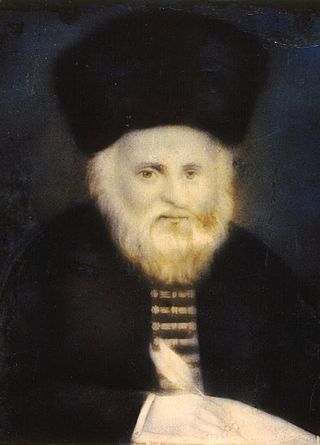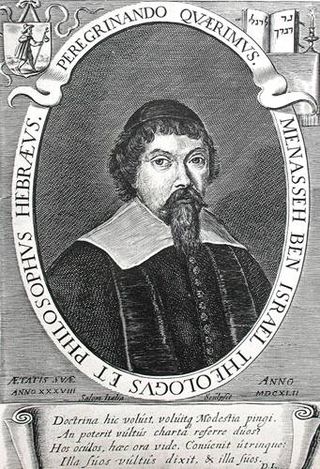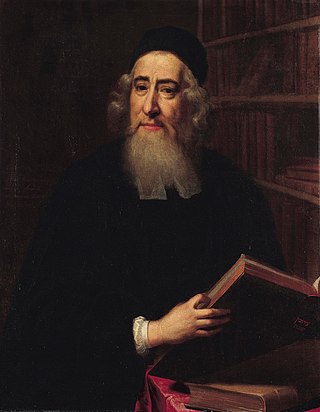Related Research Articles

Samson Raphael Hirsch was a German Orthodox rabbi best known as the intellectual founder of the Torah im Derech Eretz school of contemporary Orthodox Judaism. Occasionally termed neo-Orthodoxy, his philosophy, together with that of Azriel Hildesheimer, has had a considerable influence on the development of Orthodox Judaism.

Elijah ben Solomon Zalman,, also known as the Vilna Gaon or Elijah of Vilna, or by his Hebrew acronym Gra, was a Lithuanian Jewish Talmudist, halakhist, kabbalist, and the foremost leader of misnagdic (non-hasidic) Jewry of the past few centuries. He is commonly referred to in Hebrew as ha-Gaon mi-Vilna, "the genius from Vilnius".
Eliyahu Eliezer Dessler was an Orthodox rabbi, Talmudic scholar, and Jewish philosopher of the 20th century. He is best known for being the mashgiach ruchani of the Ponevezh yeshiva in Israel and through collections of his writings published posthumously by his pupils.
In early modern Europe, particularly in Germany, a court Jew or court factor was a Jewish banker who handled the finances of, or lent money to, royalty and nobility. In return for their services, court Jews gained social privileges, including, in some cases, being granted noble status.

Manoel Dias Soeiro ;, better known by his Hebrew name Menasseh ben Israel or Menashe ben Israel, also known as Menasheh ben Yossef ben Yisrael, also known with the Hebrew acronym, MB"Y or MBI, was a Portuguese rabbi, kabbalist, writer, diplomat, printer, publisher, and founder of the first Hebrew printing press in Amsterdam in 1626.

Jewish writers in England during the pre-expulsion period of the eleventh through the thirteenth centuries produced different kinds of writing in Hebrew. Many were Tosafists; others wrote legal material, and some wrote liturgical poetry and literary texts.

Rabbi Moses Isserles, also known by the acronym Rema, was an eminent Polish Ashkenazi rabbi, talmudist, and posek.
Mordechai ben Hillel HaKohen, also known as The Mordechai or, by some Sephardic scholars, as The Mordechie, was a 13th-century German rabbi and posek. His chief legal commentary on the Talmud, referred to as The Mordechai, is one of the sources of the Shulchan Aruch. He was killed in the Rintfleisch massacres in 1298.

Mordechai Tzemach Eliyahu, was an Israeli rabbi, posek, and spiritual leader.
Elias of London also known as Elijah ben Moses or Elias le Evesque, was Presbyter Judaeorum in 13th-century England.

Syrian Jews had predominantly two origins: those who inhabited Syria from early times and the Sephardim who fled to Syria after the expulsion of the Jews from Spain in 1492 CE. There were large Jewish communities in Aleppo, Damascus, and Qamishli for centuries. In the early 20th century, a large percentage of Syrian Jews immigrated to Palestine, the U.S. and Latin America. The largest Syrian-Jewish community is now located in Israel and is estimated to number 80,000.

Rabbi Aaron Uri Phoebus Hart was a British rabbi, who served as spiritual leader of the Ashkenazi Great Synagogue of London from 1704 until his death. He is widely regarded as the first chief rabbi of Great Britain.
Gateshead Talmudical College, popularly known as Gateshead Yeshiva, is located in the Bensham area of Gateshead in North East England. It is the largest yeshiva in Europe and considered to be one of the most prestigious advanced yeshivas in the Orthodox world. The student body currently numbers approx. 350. Although students are mainly British, there are European, American, Canadians as well as some from South America, Australia and South Africa.
The B'nai Moshe, also known as Inca Jews, are a small group of several hundred converts to Judaism originally from the city of Trujillo, Peru, to the north of the capital city Lima. Judaism moved to the south into Arequipa and to other populated cities like Piura.

Sifrei Kodesh, commonly referred to as sefarim, or in its singular form, sefer, are books of Jewish religious literature and are viewed by religious Jews as sacred. These are generally works of Torah literature, i.e. Tanakh and all works that expound on it, including the Mishnah, Midrash, Talmud, and all works of halakha, Musar, Hasidism, Kabbalah, or machshavah. Historically, sifrei kodesh were generally written in Hebrew with some in Judeo-Aramaic or Arabic, although in recent years, thousands of titles in other languages, most notably English, were published. An alternative spelling for 'sefarim' is seforim.
Moses of London, was a thirteenth-century English grammarian, halakhist and Jewish scholar in London. His Darkhe ha-Nikkud veha-Neginah is a treatise on Hebrew punctuation and accentuation.

Berechiah de Nicole also known as Benedict fil Mosse,, was a thirteenth-century English Tosafist who lived at Lincoln.
Sadqa Hussein was a Sephardi dayan, mohel, and spiritual leader to the Iraqi Jewish community in Iraq and Israel. He taught thousands of students in Baghdad, and led the Iraqi expatriate community in Jerusalem. He was the founder and rosh mesivta of the Shemesh Sedaqah Synagogue in the Geula neighborhood of Jerusalem.
References
- 1 2 3 Mordechai Yehudah Leib Zakash (ed.), Perushei Rabbeinu Eliyahu meLondrish upsakav, Jerusalem: Mossad Harav Kook, 1956